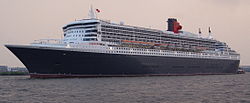Port and starboard
Port and starboard are, respectively, the left and right sides of a vessel, facing the bow (the front of the ship), regardless of direction of travel. The reason each side of a vessel is given these special names is to avoid confusion that can occur with the words "right" and "left", as these can mean one or the other side of the boat depending on the point of view of the crew member.
- The word "port» comes from the French "bâbord" and this one from the Dutch "bakboord", from "bak" 'trasero' and "boord" 'borda'.
- The word "starbor» comes from the old French "stribord", and this from the Dutch "stierboord", a variant of "stuurboord", which comes from the Germanic "steurobord", where "steuro" means 'timon' and 'bord' 'board the boat'.
In the old boats there were no fixed rudders at the stern, so the helmsman used an oar with a particularly large blade to steer the boat, sinking it into the water on the right side of the boat. Hence the right side was called the 'edge of the rudder'.
The port signaling is done with the red color and the starboard one, with the green color. During the day you can see plates with these colors on both sides and at night the corresponding lights are turned on. In this way, a ship that is at a certain distance from another ship can easily recognize if it is approaching or moving away. The same happens with airplanes, which use lights of the same colors.
All objects that must be numbered on board, if they are on the port side, have even numbers (example: fire extinguishers, emergency exits, etc.)
Contenido relacionado
Protocol for Simple Mail Transfer
Particle accelerator
Wind instrument

